Elixir Soda Fountain
Introduction
Text-to-speech Audio
As part of the Kansas City Museum's recent renovation, the Elixir Soda Fountain offers museum patrons the experience of an old-fashioned soda fountain in a sleek, modern space. In the 19th century, soda water provided a way for pharmacists to deliver mixtures of effervescent drugs, including stimulants and painkillers, in a pleasing manner for their customers. Over time, more flavors were introduced and soda fountains became popular on their own and were enjoyed with or without pharmaceuticals, especially after the public became more aware of the negative effects of some of the original stimulants and painkillers that had been used in the early years. Since the first soda fountains were found in drug stores, these stores were the first to serve flavored sodas. As a result, soda fountains helped drug stores rebrand as gathering places, and as more sweeteners and even ice cream were added to the mix, drug stores added stools and tables. The museum plans to use Elixir Soda Fountain for special events and offer ice cream, phosphates, and a variety of other traditional soda fountain items within a space that includes historic fixtures from a Modena, Missouri drug store.
Images
Front view of the Elixir Soda Fountain found in the basement of the Kansas City Museum
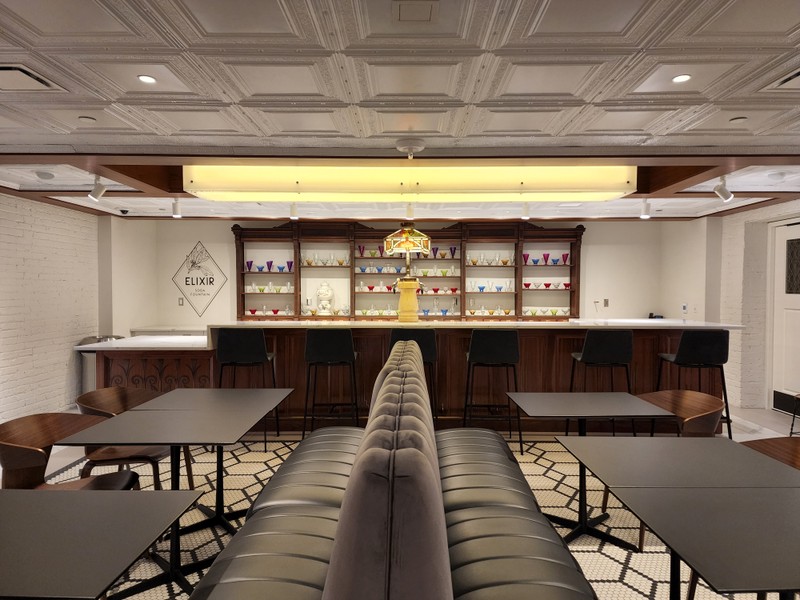
A cash register made by the Michigan Cash Register Company, located in the Elixir Soda Fountain
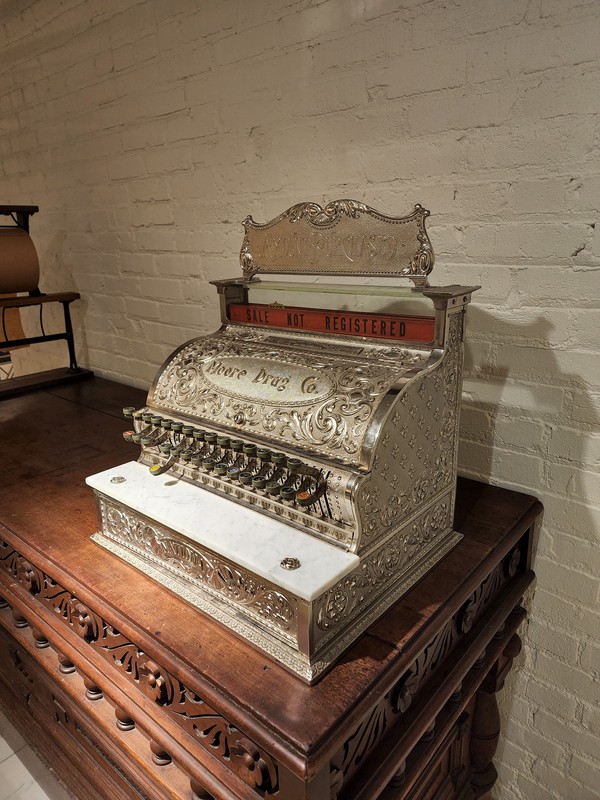
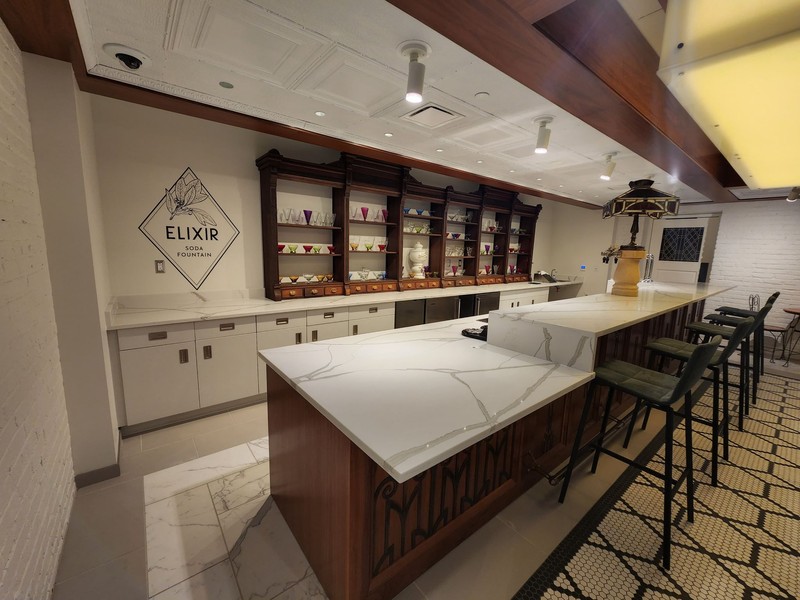
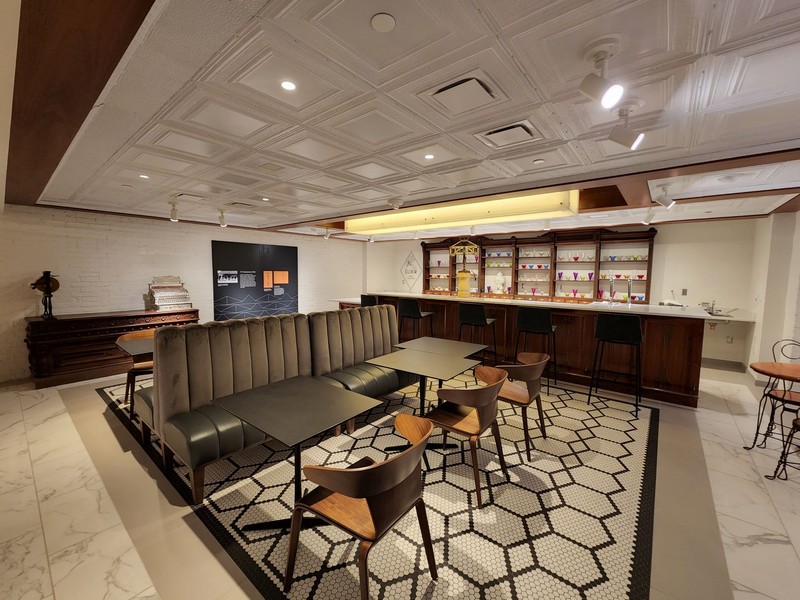
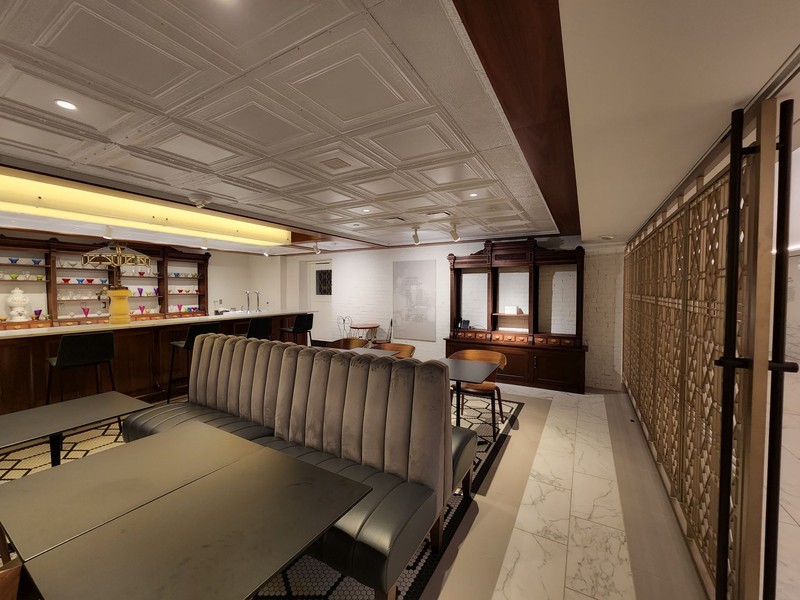
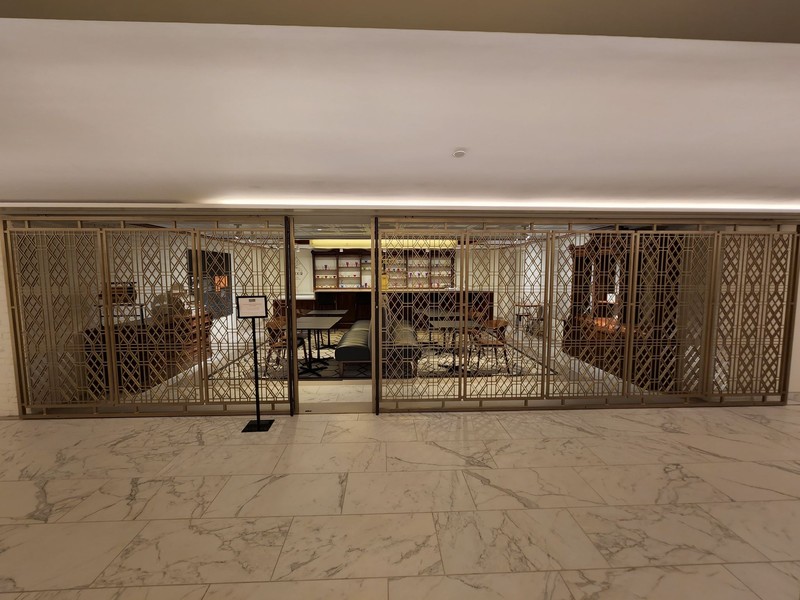
Backstory and Context
Text-to-speech Audio
Soda fountains were first introduced in Europe, but their popularity spread into the United States, making them a staple in American society for decades. Soda fountains began in drugstores, as the mineral water used to create the bubbly concoctions was considered medicinal. The soda base was quite bitter, leading to the addition of sugary syrups to make the drinks more palatable. Pharmacists, or druggists, played into the popularity of the drinks, creating their own formulas to attract customers while promoting each concoction as a health aid. As the decades passed, the advertisement for soda as a healthy drink transformed into promotion of the concoctions as simply popular and delicious, due to the newfound understanding of certain ingredients being detrimental to the health of consumers.
The Liquid Carbonic Company continually contributed to the soda fountain industry throughout the late 1800s and into the early 1900s. Its founder, pharmacist Jacob Bauer, developed "a process to put carbon dioxide into pressurized cylinders for distribution."3 The carbonated water was then sold to drugstore soda fountains, where soda jerks, or the person mixing soda drinks, would add syrups and phosphate to make delectable drinks for customers. This process was popular for decades, with soda fountains reaching their peak popularity in the 1940s. Over time, soda dispensers would be introduced, removing the need for a soda jerk to mix syrups into the carbonated water. As the soda industry grew, and packaged soda drinks became more accessible, soda fountains declined in popularity. By the latter half of the 20th century, soda fountains were no longer a staple for socializing. However, their historic charm and character have led to their re-introduction in many areas of the United States.
The Kansas City Museum boasted a soda fountain long before Elixir was created as part of the recent remodel. A donation in 1977 from the children of C.W. and Wilma R. Kirby of Modena, Missouri led to the opening of a drug store and soda fountain exhibit in 1982. The Kirby's were the owners of a drugstore in Modena, which served as a social hub for decades before closing in the early 1970s. The drugstore contents were donated to the Kansas City Museum, and recent renovations to the Museum include a sleek, modern update to the popular exhibit.
Sources
- Berger, Karen. Soda Fountains & Their Pharmacist Inventors, Pharmacy Times. February 16th 2019. Accessed March 17th 2022. https://www.pharmacytimes.com/view/soda-fountains--their-pharmacist-inventors.
- Morrison, Denise and Anna Marie Tutera. The Journey to Now. Kansas City Museum. 84 - 85. http://kansascitymuseum.org/wp-content/uploads/2020/09/September-October-2020-KC-Studio-Advertorial-FINAL-PRINTED.pdf
- The Liquid Carbonic Company, Drugstore Museum. Accessed March 17th 2022. https://www.drugstoremuseum.com/soda-fountain/liquid-carbonic-co/.
- Wall texts and object labels. Downstairs at Corinthian Hall, Kansas City Museum, Kansas City, Missouri.
